This is a guest post by Clive Titmuss
Previously published on Classical Guitar Canada. Visit his website to see more of his work and recordings (earlymusicstudio.com). All images provided by Clive Titmuss. Click on the images to enlarge.
Part I
As student guitarists, we learned that J. S. Bach wrote four suites and a number of miscellaneous pieces for the lute, now played on the guitar. Wikipedia reads:” Bach composed a suite and several other works for solo lute.” You know what I am going to say next–perhaps you should sit down…: A more up-to-date reading of the evidence would be that Bach did not write any music specifically intended for solo lute.
The apocryphal lute works lie well within the confines of Bach’s established keyboard style, and other than a poorly thought-out arrangement, ill-suited to the instrument and worked-out at the keyboard (BWV 995, Suite in G minor), almost nothing from the composer really links them to the lute. Recent scholarship and the work of a number of makers and players of 18th Century-style keyboards have made it obvious that Bach wrote the music for, and probably at, the lute-harpsichord. The real story is everything that happened after his death that connects the works in question to the lute.
Briefly, my argument runs like this:
- Over a period of years and in a mood to experiment, Bach writes thin-textured music for his own use on a gut-strung keyboard instrument or clavichord. With the arrival of an enlarged and improved instrument, he adapts favourite earlier material to it.
- Most of his music remains in hand-copied versions (MSS) in his lifetime. The music is first indexed, edited and published by the Bach Gesellschaft in the 19th Century as keyboard music.
- A German musicologist presents a contrary opinion, claiming that Bach is a composer of lute music.
- Without anyone around who plays the lute well enough to refute the idea, it is gradually repeated and eventually accepted. Cultural nationalism and politics play a role.
- Hungry for international credibility in the concert hall and on recordings, during the 20th Century guitarists transcribe and adopt the music as part of their native repertoire.
- A more accurate picture of historic performance practices and renewed scholarship about the details of his work re-evaluates Bach’s legacy, but the myth of Bach lute suites, especially among guitarists, lives on largely unchallenged.
Known, with minor variations, as “The Lute Suites of Bach” for at least 100 years, the pieces were never composed as a group, though this is the form in which they have repeatedly been published and recorded. They are not technically possible on the lute without fundamental changes to the text. Two of the suites, in E major and G minor, are two-clef arrangements of earlier pieces for strings with only passing resemblance to the lute style. External and internal evidence presents too many contradictions to ignore.
My subject is this: How did this misconception get started, perpetuated, and why does it persist in the face of so much contrary evidence?
Bach wrote effectively for the lute as a colour instrument in several choral works. A bass aria with lute, violas d’amore and continuo is the crucial moment in the St. John Passion when Jesus ascends to heaven. In an early version of the Saint Matthew Passion, the aria Komm süsses Kreuz has a wonderfully written lute part, but the lute was supplanted by the viola da gamba in the later version. In the Trauerode (BWV198), a funeral cantata for Christiane Eberhardine, Electress of Saxony, Bach wrote for two lutes. He capitalized on a historic archetype whenever he needed an evocation of the angelic, but his writing style in these cases—more like his cello writing–does not come even close to resembling what he is supposed to have written for the lute.
British lutenist and scholar Nigel North’s comments on his Linn Records Bach on the Lute set: “Instead of labouring over perpetuating the idea that the so-called lute pieces of Bach are proper lute pieces I prefer to take the works for unaccompanied Violin or Cello and make them into new works for lute, keeping (as much as possible) to the original text, musical intention, phrasing and articulation, yet transforming them in a way particular to the lute so that they are satisfying to play and to hear.”
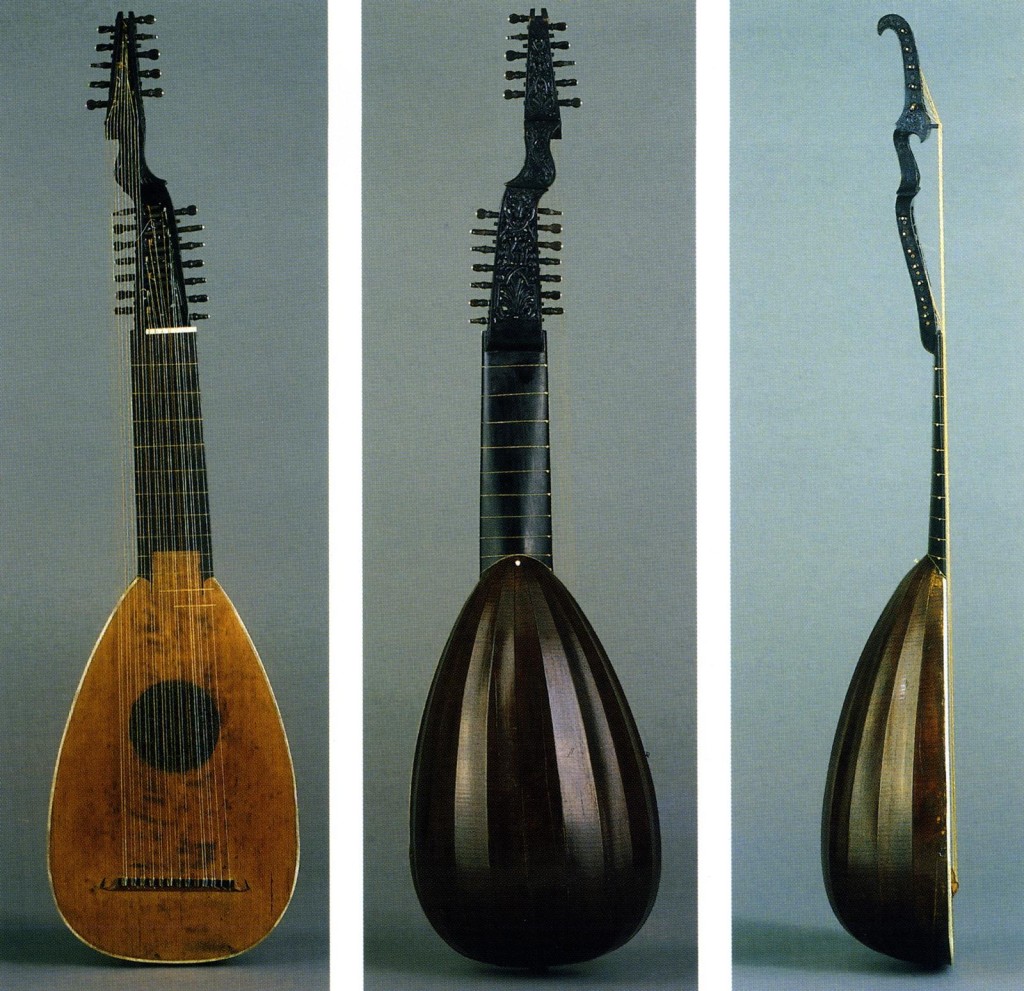
It is easy to forget that Bach did not enjoy the reputation that he has today, a process that took two hundred years. Since Mendelssohn’s famous revival performance of the Matthew Passion early in the 19th Century, his music has become a monument of our civilization, like the works of Shakespeare or Beethoven. It has been an extraordinary history in itself–as Percy Young observed (quoted in Eric Siblin’s excellent book on the Cello Suites): “The difference between the reputation that Bach enjoyed in his lifetime and that which accumulated posthumously is one of the remarkable phenomena in the history of music.”
A Look at the Sources:
(It will be of great assistance to the reader to become familiar with the Bach Werke Verzeichnis [Bach Works Index] numbering of the works under discussion, as I’ll be referring to them, after initially mentioning the title, by these designations rather than Suite I, Suite II etc.)
When Bach died, his nachlass, a list of his household goods and values included, among other things, a teapot, a lute (valuable, at 21 reichsthaler), violins, 3 harpsichords (one of them 80 rt) and two gut-strung lute-harpsichords (30 rt). There is evidence that he ran an instrument rental business. Alas, there is no mention of what happened to his enormous collection of scores, but we know that he divided the bulk of his library between Wilhelm Friedemann and Carl Phillip Emmanuel. Many of his works were not autographs, but copies made by a number of his students.
Wilhelm was a prodigy, but something of wastrel and a drunk, and bit by bit he sold his patrimony to pay his debts, hawking many manuscripts to collectors, while Carl carefully catalogued his father’s work. On his death, more MSS hit the market. There are variant versions of some of the best-known pieces, including two copies of the Cello Suites, for example. The sources of Bach’s music are now widely dispersed among the libraries of the world. Copies were titled after, even long after, composition. The identification of the various copyists who were his pupils has become a cottage industry among musicologists.
BWV 996 (Suite I in E minor), the earliest of the pieces according to modern watermark research and stylistic traits, was sub-titled by the copyist aufs Lauten werck. It has many similarities to the Toccatas for harpsichord, and dates from before 1712. In classic French suite form, it appears to be the composer’s earliest piece for lute-harpsichord. Of all the works under discussion, this is the piece least suited to the lute and the farthest from its style. Modern lute and guitar arrangements simplify the dense keyboard style of the opening movement (Passagio-Prestissimo) and particularly the Gigue.
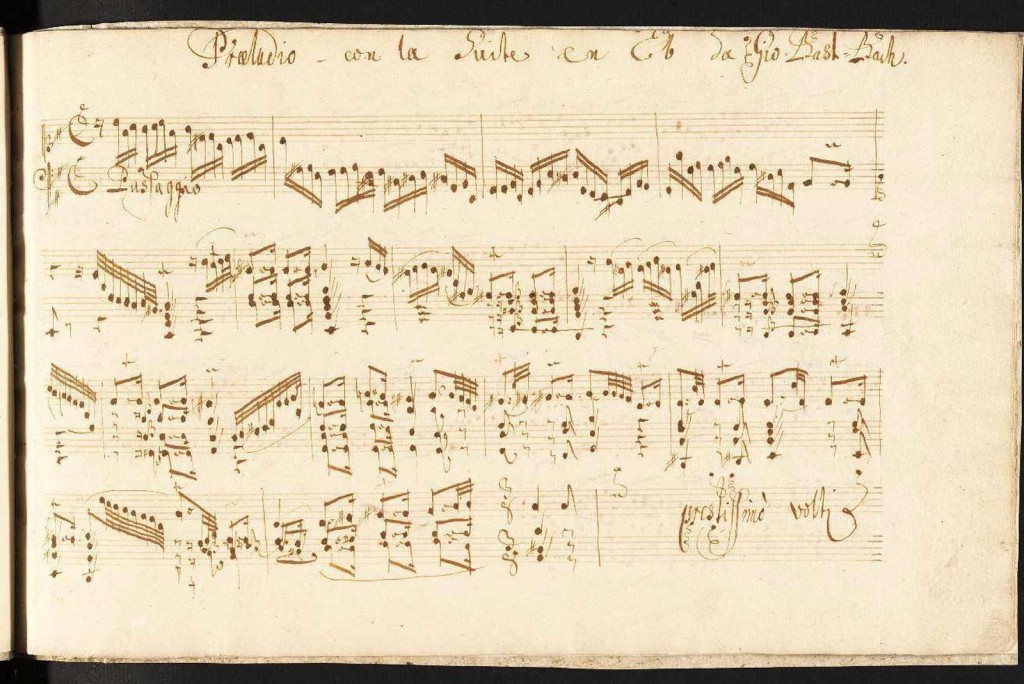
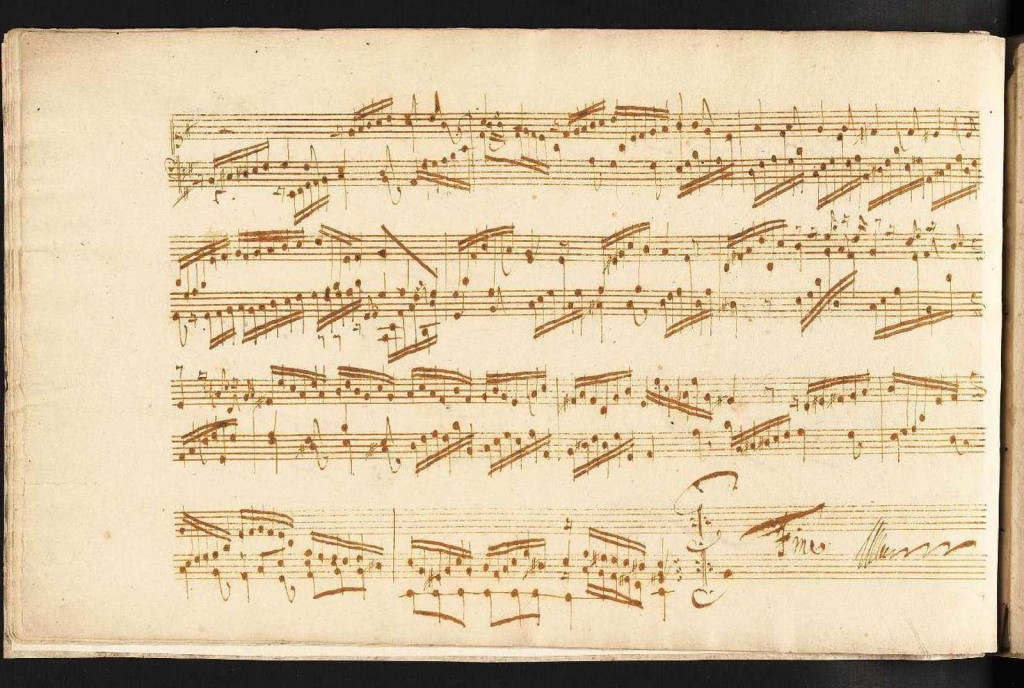
Similarly, BWV 998 (Prelude, Fugue, Allegro in E flat) from the mid-1740’s was titled “Prelude pour la Lute ó Cembal” (a mixture of fractured French, German and Italian). Looking at this autograph, even in facsimile, it is easy to see that the title was not written by Bach, and has been added later in a different hand. This piece has an interesting wrinkle: Running out of paper, Bach finished the last bars in keyboard tablature. This piece is Bach’s last and most sophisticated work for the lute-harpsichord.
BWV 997 (Suite II in C minor), exists in a number of copies. One is thought to be by C. P. E Bach, another, by J. F. Agricola, but probably not titled by him (this title page dates from the early 19th Century), is designated “C moll/Praeludium, Fuge, Sarabande,/ und Gigue/ fur/ Clavier.” The score has the right hand in treble clef, one octave higher than is customary, perhaps to compensate for having to copy from an autograph that appeared to be too low for normal harpsichord music. It was suggested at one point that the piece was for violin or oboe and continuo. The Alfred Dörrfel Bach Gesellschaft edition uses a multi-clef system of alternate readings. Many guitar transcriptions do the same. This work may have been the trigger for the assumption that Bach wrote for lute, since three movements (Prelude, Sarabande and Gigue, without Double) were made into lute pieces in tablature in the 1740’s. Even with the upper clef transposed down, the tessitura is too high for the lute. The busy bass-line and texture mark it as lute-harpsichord work.
The “Little” Prelude in C minor, (BWV 999) titled Prelude pour la Lute is a copy by Johann Peter Kellner. It is similar in date, style and texture to the first prelude of the Well-Tempered Clavier, 1722. Bach is supposed to have written these works, now much played by students of the piano, as pedagogical exercises for his son Wilhelm Friedemann. This piece is playable on the lute, but bears no resemblance to any lute preludes by Bach’s contemporaries. Kellner’s claim that the work is for the lute can’t be verified, and with its clear keyboard disposition, it seems unlikely.
Only one suite bears an unequivocal designation: the autograph of BWV 995 (Suite III in G minor, a transcription of BWV 1011, Cello Suite V): Suite pour la Luth par J.S. Bach. The problem with this version, the subject of the Wikipedia entry, is that it extends down to G’, a tone lower than the disposition of the lute common in Leipzig. Bach transposed and revised or converted it from its cello model around 1730. Bach’s punctilious use of rests in the bass, the use of two-clef score, and typical right-hand chord filling is an indication of that he made the arrangement from the keyboard.
The later lute intabulation (from the 1760’s) departs significantly from the Bach MS in its use of the open bass diapasons of the lute and in its idiomatic ornamentation. The serious demeanour of the suite, originally written in the 1720’s in French style, was outdated by the 1740’s. A more galant flavour was fashionable in lute music, with simpler melodic and rhythmic ideas, and a disposition to recreation. The light music of Falckenhagen and Kropfganss, the rapidly changing moods of Weiss’ later Suonatas, and the cantabile pieces of Baron exemplify the ingratiating new lute style.
The tablature version of BWV 995 attempts, with some success, to convert the suite to this taste by adding anachronistic ornamentation. But at heart, it is a 17th Century suite in the mould of an earlier generation. The fact that he chose to arrange this piece is of great significance. From his point of view, it was a favourite example of his early work in antique style, and it represented a link to the style of the lutenists and keyboard music in suite form of the 17th Century, the style of Reusner and Froberger.
In a similar move, Bach made a two-clef arrangement (BWV 1006a is a copy, not an autograph) of the Violin Partita BWV 1006, sometime in the 1740’s. In making the transcription, he did not go quite as far as he did with BWV 995 in adding chord tones, ornaments and filling of inner voices. The key is impossible on the lute, as the piece needs an open e string. Several writers have commented that this Bach transcription is not good keyboard music. He obviously liked the piece and used it as the overture for a Cantata, adding trumpets and transposing to D major. The source has no instrument designated.
On the lute side of the register, there are contemporaneous transcriptions into tablature by two Leipzig lutenists of BWV 1001, three movements of 997 (Johann Christian Weyrauch, an amateur lutenist and lawyer), and all of 995 (probably Adam Falckenhagen, who was a professional player and composer). These transcriptions exhibit the arrangers’ art in transposing basses, re-iteration of tied notes, simplifications of chords and the addition of idiomatic ornamentation.
Examination of the sources shows that Bach never wrote pieces especially for, and with an understanding of, the requirements of lute music. From the point of view of today’s lute player, Weyrauch’s intabulations (BWV 1000 and three movements of BWV 997) are clumsy, even awkward, and fail the test of smooth performance. Most lutenists today prefer to start with the score versions and make new transcriptions.
Did Bach Compose Lute Music?: The Ethereal World of the Hypothetical and the Rhetorical
Bach was an inveterate transcriber who arranged Vivaldi, Marcello, and other writers of violin concerti for the harpsichord and for organ. He did this work mainly in his early career serving as Kapellmeister in Weimar (1708-17) and into the early 1720’s, when he wrote the Violin Sonatas and Partitas, and the Cello Suites.
Bach made his arrangement of the fifth cello suite (BWV 1011/995) with apparent haste.. There is a suggestion that the dedicatee, M. Schouster, identified recently as a book-dealer in Leipzig, may have encouraged Bach to create a saleable version of a piece which he had written about ten years earlier. The first page is neat and properly spaced, with carefully formed note-heads and stems. Looking at the end of the tres viste section of the Prelude and the Bourée, the writing is more typical of a rough copy. He wrote note-names to clarify messy bass notes. Compared to the finished copy of Anna Magdalena’s BWV 1011, BWV 995 seems like a sketch.
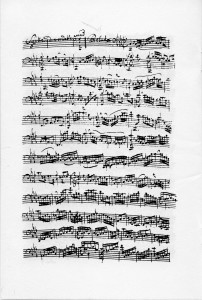
If he were serious about writing with the lute in mind and preparing it for subsequent adjustment or intabulation, we would expect his handwriting to reflect it. Just because he has written “pour la Luth” at the top of the page, we need not conclude that he has done it with any conviction. If Bach set out to write real lute music, and not keyboard music with annotation, he might have done better than BWV 995. This version may have been the beginning of that process. As it stands, BWV 995 is a stab at arranging an earlier work for the lute, but it is not lute music.
Bach had close contact with lutenist Sylvius Leopold Weiss in 1739, when Weiss spent four weeks in Leipzig. As reported by Wilhelm Friedemann, he visited Bach and it was recently realized (1993) that Bach arranged some of Weiss’ music (BWV 1025, a Sonata for violin and continuo). If the two were closely allied, it is possible that Bach had Weiss in mind, making arrangements and possibly writing compositions for him. BWV 998, 997 and 1006a have been mentioned in this connection.
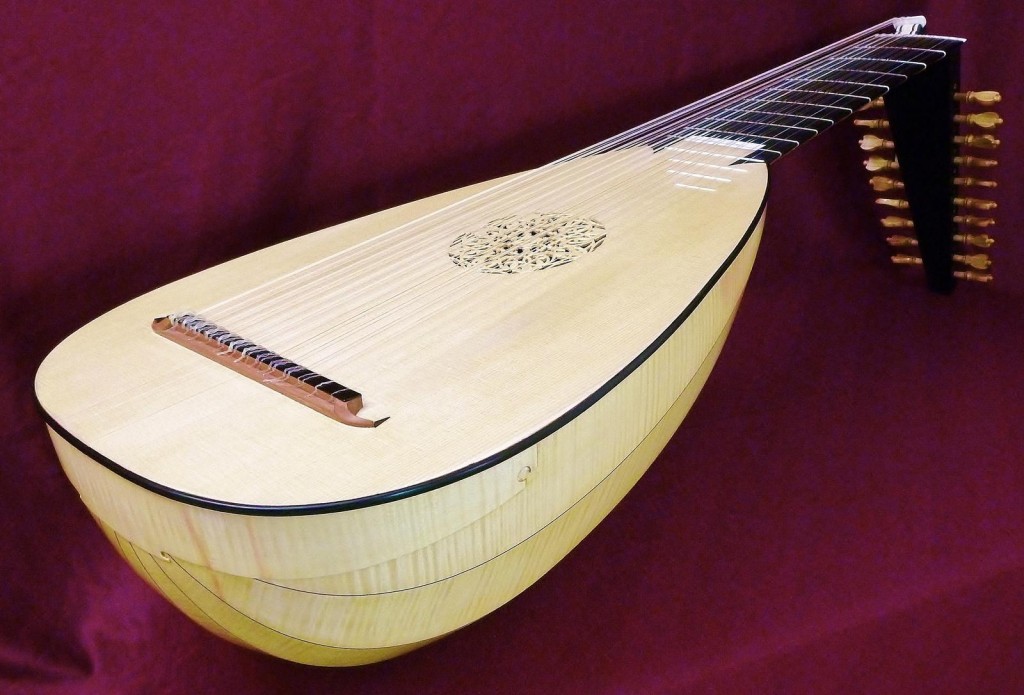
He arranged his own violin-to-harpsichord concerti, and he arranged the Adagio from the A minor violin Sonata, in addition to the E major Partita (BWV1006), for keyboard, perhaps specifically for five-octave clavichord (a personal theory). Bach’s habit of borrowing from himself has led writers to making a case that Bach may have written various pieces for the lute in thin-textured style at relatively low pitch (BWV 995, 997, 998, 999) and, surrounded by capable exponents of the instrument, expecting them to make the lute transcription. Two lutenists in his circle, Weyrauch and Falckenhagen, arranged pieces in his stead, so the proposition that he expected others to make the proper adjustments to his compositions seems reasonable.
The problem with this train of thought is that it underestimates Bach’s professional capacity. Any competent composer or player who listened to lute music for a few minutes could compose or improvise something like it with little effort. Both lute and guitar require careful arrangement of the notes. The would-be lute composer must learn to flatter the instrument in just the right way. The style of lute music developed over hundreds of years; it was in its twilight. As he demonstrated with his use of the lute in liturgical works and the funerary cantata, for Bach, the lute was a special-effect instrument, not central to his style of composition. He had little motivation to dabble in such a circumscribed medium. In the German-speaking world in the middle of the18th Century, the lute was mainly the province of specialists.
Bach was incomparably original as a composer of contrapuntal music for violin and cello: He mastered a difficult art of suggestion, almost deception. He played these instruments, and wrote supremely challenging music that lay within the grasp of any accomplished player willing to master it. The music is difficult, but does not contain technical impossibilities. He was extremely particular about his editorial prerogatives and copying, allowing only favoured students and his wife Anna Magdalena to copy particularly sensitive scores, such as the Cello Suites and sections of the Matthew Passion. Why would he leave final preparation of scores to someone else if he really understood the lute? If he really wished to write convincing lute music, as he demonstrated with his ensemble parts, he was more than able to do it. The speculation that he would leave his arranging to others seems far-fetched. Nevertheless, countless recordings for both guitar and lute have proposed relaxed editorial responsibility on Bach’s behalf.
Looking at the images of the music now, and comparing them with modern transcriptions of lute music of the period, it is difficult to imagine how anyone could ever have suggested that they may be lute music by Bach. In appearance on the page, everything about them, the notation itself, the use of the pen and the beaming, stem directions, the arrangement of clefs and the voice leading—it looks and feels like keyboard music.
Where did this perception arise? And why particularly, in the face of well-known evidence overturning the pre-War consensus (detailed in Part Two), have modern players declined to update their concepts? A tour of the post-Bach revival will illuminate the twists and turns of the story. In the next part, I’ll be looking at The Paper Chase; The Action Shifts to the Recording Studio; The Internet Complicates Everything; Weiss Comes to Town.
Part II
The Paper Chase: How Bach acquired and lost a reputation as a composer of lute music:
The Bach Gesellschaft began publishing Bach’s entire oeuvre in 1851. The aim was to produce a complete and authoritative text under the direction of experienced scholars, and to index and publish all of his music. In 1897, Alfred Dörffel edited a volume including the corrected versions of the English and French Suites, and Prelude, Fugue and Allegro in E-flat major, BWV 998, Suite in E minor, BWV 996, Suite in C minor, BWV 997 and alternative readings of various pieces of the Well-Tempered Clavier. In putting these pieces together in a Completion Volume, (the main keyboard works had already been published) he grouped them with other pieces that are typical Bach keyboard music of the period, but not part of a specific set.
Organist Wilhelm Tappert got the “lute suites” ball rolling when he identified BWV 995-9 and BWV 1000 and 1006a as lute pieces in an article published in 1900 (Sebastian Bach’s Compositionen für die Laute). Tappert made a name for himself by criticising the editors of the Bach Gesellschaft for, as he saw it, failing to publish the pieces in a separate group as lute music. He declared: “Er war lautenist, er gab sogar Unterricht im Lautenspiel”. (He was a lutenist, and even gave lessons in lute-playing”.) His statement seems puzzling now, but he may have been prompted by Bach’s letter of recommendation (1735) for Johann Ludwig Krebs, a student and an important copyist of Bach’s music. The letter praises Krebs as violinist, keyboard and lute player. Tappert also issued a pioneering monograph on Esias Reusner, an important lutenist of the late 17th Century who transmitted the French brisé lute style to Northern German states, so he was familiar with German lute-playing traditions to some extent.
In 1905 organist and physician Albert Schweitzer wrote in his monumental study J.S. Bach, citing Johann Friedrich Agricola’s description of Bach’s lute-clavier (sic, in English translation): “What Bach meant to do with this clavier is not quite clear. It could only be of use for playing his lute compositions on a keyed instrument”. Schweitzer echoed Tappert’s article criticizing the editors of the Bach Gesellschaft for not publishing what Tappert maintained were Bach’s lute pieces:
“Recent researches (i.e. Tappert) show that [Prelude, Fugue, Allegro], [Suites in E minor, E major, and C minor (BWV 998, 996, 1006a, 997)], are also keyboard arrangements of compositions for the lute. The three Bach partitas mentioned in Breitkopf’s catalogue of 1761 are thus not lost as was almost universally supposed. We may therefore probably answer in affirmative the question whether Bach himself played the lute.”
Schweitzer was Alsatian, fluent in French and German, who studied organ-playing in Paris. His ability as a linguist and cultural historian led him to write his study first in French, then in 1908 he re-wrote the work in German, and it was subsequently translated into other languages. Tappert’s obscure article received world-wide attention as a result of Schweitzer’s endorsement. By supporting him against the all-powerful BG, Schweitzer internationalized the controversy. The myth of Bach’s lute suites escaped its German-language and culture confines and gradually became orthodox as Bach’s fame outside Germany grew. That process would take another thirty years.
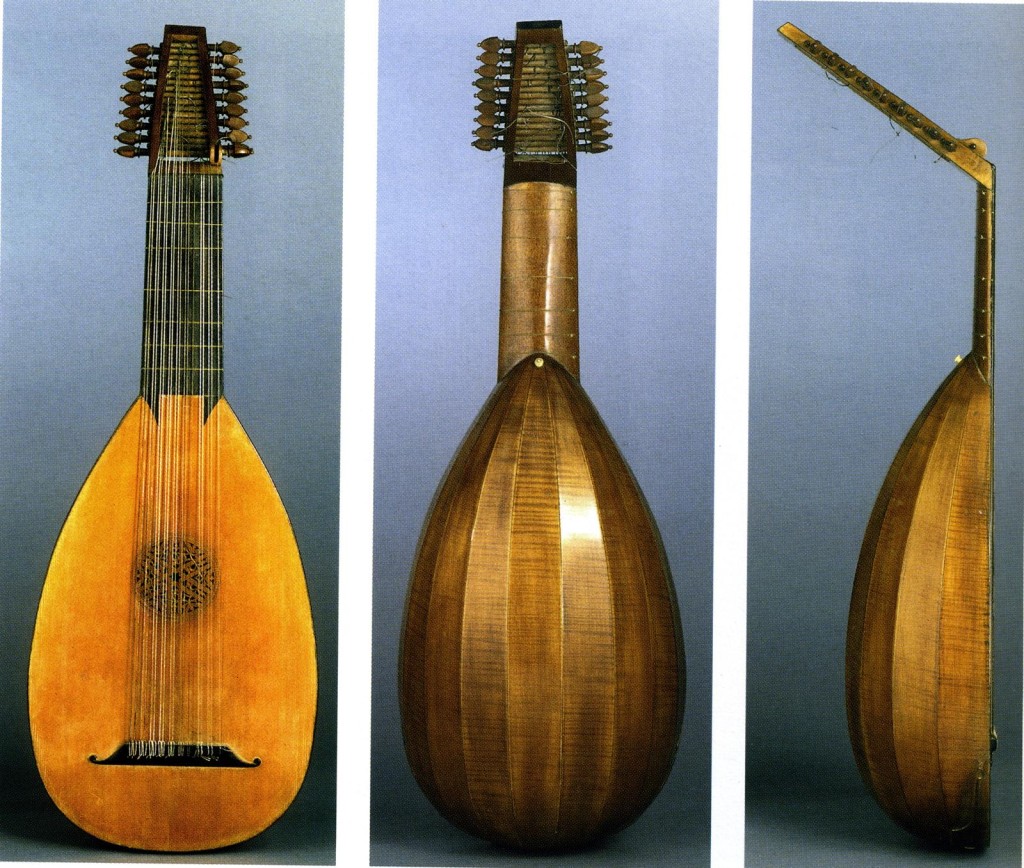
An edition of the suites and pieces by Hans Dagobert Bruger (1894–1932) appeared in 1921: J.S. Bach: Compositionen für die Laute. Bruger’s edition (still in print) was a transcription for a ten-string modern guitar-lute hybrid, common in Germany and Eastern Europe since the end of the 18th century. He was among the first to publish the works in a practical edition as lute pieces arranged for guitar, and to examine the sources and compare variants in modern musicological style. Most importantly perhaps, he transposed the pieces into the keys in which they now are commonly played on the modern six-string guitar and he set the precedent for their acceptance in the guitar repertoire. Bruger’s is still considered a standard edition of the music, a starting point for six-string guitar transcription.
Hans Neeman, the Berlin lute exponent, musicologist and editor published a study in the Bach-Jahrbuch in 1931 entitled Johann Sebastian Bach’s Lauten-Kompositionen, which combined careful analysis of the sources and an assessment of their peculiarities. Neeman is also an important figure in the early re-discovery and publication of Weiss and Reusner in lute tablature, and published articles and music for guitar and lute beginning in 1925. He was among the first to champion a parallel staff and tablature format for lute music now common for the guitar.
On the eve of the Second World War, in 1939, two important books appeared: Neeman’s edition of Suites by Weiss and Reusner, (Das Erbe Deutscher Musik V. 2.12) and Schule fur die Barock-Laute, (A Tutor for the Baroque Lute) by F.J. Giesbert. The latter included the first re-publication of the tablature version of Bach’s Suite pour la Luth (BWV 995). The book marks the revival of the 13-course lute in d minor tuning, essentially regarded as “obsolete” in Germany since the late 18th Century.
The date in an important detail: We must take politics into account in the atmosphere in which these publications appeared. Tappert, Neeman and Giesbert depicted a lute-playing Bach, a composer who understood the lute’s idiosyncrasies and was fully cognizant of its strengths and limitations. There was pressure to promulgate a Bach hagiography–Bach as a masterful genius who composed solo music for the lute in much the same way as he did for harpsichord, organ, cello and violin.
No one really questioned this portrait until the 1960’s. German musicologist and editor Hans Radke was among those wrote in defence of the idea that Bach did not really compose for the lute directly. He voiced doubts about the idea of Bach as a player and made a detailed assessment of the situation, separating the tablatures from their models, noting that there were only two autographs (BWV 998 and 995) and carefully de-constructing Bach’s BWV 995, making comparative observations with the tablature and cello versions. He called the article War Johann Sebastian Bach Lautenspieler? (Was JSB a lute-player?), and it is fair to say that this article was the first to cast serious doubt on the widespread idea that Bach wrote for the instrument: “[It is notably evident] that the Suite in g-minor in the original version cannot be played note-for-note on the lute.”
In 1967, British musicologist and early keyboard specialist Howard Ferguson wrote a more complete assessment of the lute-harpsichord according to sources close to Bach entitled Bach’s Lauten Werck, in the magazine Music and Letters. The article traces the earliest reference to the instrument back to 1511, and compares the stringing and disposition of models described by Bach contemporaries in detail. The inference that he composed especially and idiomatically for this instrument was inescapable. The final sentence of the article, referring to a visit by lutenists Weiss and Kropfganss:”…it is tempting to surmise that the visitors, besides being introduced to Bach’s lute compositions, also listened to, and were perhaps even momentarily deceived by, his performance on the Lautenwerk.”
In 1982, The Neue Bach-Ausgabe, which succeeded the old Bach-Gesellschaft, published Werke für Lauteninstrumente, (Series V, Volume 10) edited by Thomas Kohlhase. Kohlhase’s dissertation on the subject is dated 1973. It is a benchmark study of the sources. In the foreword to this volume, he offers the opinion that BWV 995 and 999 are for the lute, BWV 998 is for lute or harpsichord equivocally, BWV 996 is for lute-harpsichord, BWV 997 is “indirectly” for lute, and for BWV 1006a the intended instrument is not clear, i.e. unspecified. This is the first time that an “official” edition of the music appeared making the declaration that the old editorial assignation of all the works to the lute is dubious. The editor chose to print only the BWV 1000 tablature, and did not reproduce the tablatures for BWV 997 and 995. This may be an indication that the editors perceived market demand among keyboard players, rather than lutenists.
The German expression Lauteninstrumente is a neologism which is impossible to translate adequately: It is a neat, uniquely German-language concept that commits the music neither expressly to the lute nor keyboard. Bärenreiter (NBA’s publisher) unfortunately lists this important volume as unavailable, that is, out of print. The edition is available in pdf format on the web and presents a reliable and clearly printed text from which to make transcriptions. Since the volume appeared and sold mainly in German-speaking countries, its subsequent influence has been limited.
In the printed Guitar Solo catalogue (2007), Bach is heavily represented. It lists five separate editions of Bach’s Lute Music arranged for guitar, by Bruger, Koonce, Sarkosy, Wensiecki, and Willard, with numerous single-suite editions. On the web, I found additional “complete lute suites”, Italian editions by Gangi, Carfagna, Company and Antonioni.
Frank Koonce’s arrangements for the guitar, widely accepted as the standard edition in North America, is titled Solo Lute Works, (2nd edn. 2006). The editor includes an account and photos of the lute-harpsichord, photos of contemporary lutes, a complete set of facsimiles, a study of sources and advice on ornamentation and rhythmic alteration. He does not cast significant doubt on the question of lute attribution, and despite a thorough engagement with modern scholarly resources, falls on the side of extending the “lute suites” tradition with his title.
The action shifts to the recording studio:
In 1922, the Munich guitar society invited the young guitarists Andres Segovia and Miguel Llobet to play a concert. This invitation resulted in Segovia’s meeting Hermann Hauser, then a luthier making only German lute-guitar hybrids. At that time, he had just made his first guitar on a model by Stauffer, designed by Legnani. Segovia encouraged Hauser to make guitars, not in the German/Austrian tradition, but like the Spanish instruments which Segovia himself played.
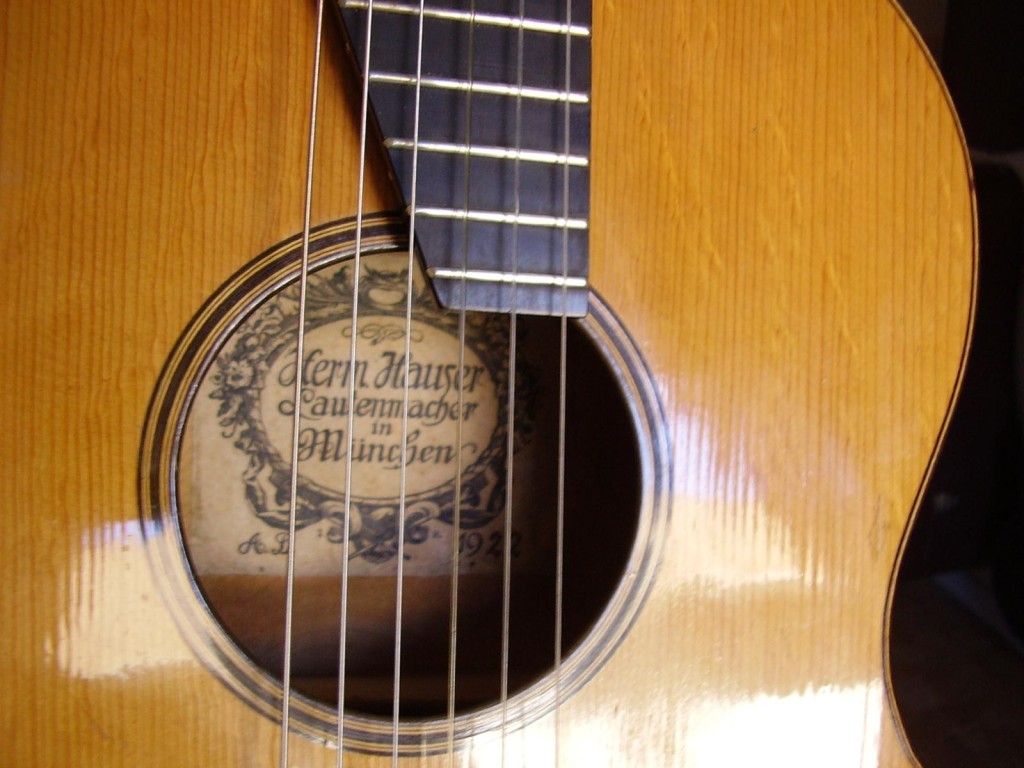
During the twenties, Segovia astonished the audiences in Paris with his fiery playing of masterpieces by Bach, including the Chaconne in D minor (from the Violin Partita, BWV 1004.) and movements of the Cello Suites. Segovia did not play suites in their entirety, but preferred to select movements that fit well with his programming. Segovia’s success with Bach in his early career marks a handover from the lute to the guitar. From this point forward, public exposure to the music would be “lute suites transcribed for the guitar”. By the mid 20th Century, Bach’s reputation as a composer of lute music was established and widely accepted. During the 1970’s, 80’s and 90’s, literally dozens of fine recordings of the Suites were made on the guitar claiming the patriarchy of Bach as a lute composer.
In 1949, Walter Gerwig used a ten-course lute in Renaissance tuning to record a large number of the pieces, as well as the first of the Cello Suites and other baroque lute music. To my ear, the version of BWV 995 that he recorded sounds more like a new version of Cello Suite V than a literal intabulation of Bach’s Suite pour la Luth score. There were similar recordings on the lute in the late 50’s (dating uncertain) by Michael Schäffer and Michel Podolski.
In 1956, Julian Bream made a recording of portions of BWV 996, 997, all of 998 and 999, for Westminster, entitled A Bach Recital for Guitar. In 1965 he made what may fairly be called one of most widely-heard and influential recordings of Bach, titled Lute Suites I and II. Emmanuel Winternitz quotes Bream’s memorable remarks in notes to the recording that the music “falls happier on the guitar”. In his edited guitar arrangement of BWV 996, he refers to “bold figurations so characteristic of the lute” in describing the opening Passagio-Presto.
In the mid-60’s and early 70’s, Dutch harpsichordist, Gustav Leonhardt made a recording of BWV 996 in E minor suite and toured widely; playing it and his C minor transcription of the Suite pour la Luth. On one of his last Bach recordings, he re-recorded BWV 996 and 998.
In 1972, German-Swiss lutenist Eugen Mueller-Dombois recorded an arrangement of the Suite pour la Luth with a fourteen-course instrument in the standard 18th Century tuning which rationalized the tablature version of Falckenhagen with the Bach MS version. Another of his recordings was the first to use the lute for BWV 998 in the original key of E flat. Dombois also wrote two articles for The Lute Society (1972-3) contending that though the Prelude is playable on the lute, both the Fugue and Allegro contains numerous technical impossibilities, making them more likely to be for lute-harpsichord.
In the early 1970’s, Spanish guitarist Narcisco Yepes was commissioned by Archiv/DGG to make J.S. Bach: Werke für Laute. Yepes had previously made recording of some of the pieces on the ten-string guitar and he made his lute version with alterations to the text and anachronistic guitar-style tunings. An e-mail correspondent familiar with the matter informed me that Yepes was uncomfortable playing the lute and was not happy with the recording. Yet it was an adventurous and ground-breaking project which did much to familiarize audiences with the performance problems of the music from the lute-player’s point of view.
In 1975 Australian guitarist, John Williams issued a recording entitled The Four Lute Suites. This is the apogee of the Lute Suites of Bach portrayal. At the time the recording companies, not yet the now–familiar media conglomerates, noticed that sales of vinyl records were declining. There was a prevailing attitude among executives of these large firms that the public’s interest would be piqued by selling large sets labelled as “Complete”. For a while it worked–until they invented the compact disc.
Williams’ recording was one of the most influential on an entire generation of guitarists, responsible in part for a crop of versions of “The Lute Suites” for guitar and lute in a similar format.
At the same time, indications of a sea change occurred with Martha Goldstein’s recording of selected works (BWV 996, 997, 998) on a newly-re-constructed Lautenwerk. One of the main drivers behind its revival was Bach’s well-documented interest in the instrument. There are now several makers, and a number of prominent early keyboard specialists associated with it, including Kim Heindl, Christiane Jaccotett and Robert Hill. In selecting and playing these pieces on an instrument described in detail by Bach’s contemporaries, these players have eloquently turned the tide in favour of restoring the music to its probable origins. The recovery of this musical technology has provided context that was missing from the historical record: Because of the low tension and resulting greater key-dip, the action is more deliberate than the harpsichord. Like the theorbo or larger lutes, the response and damping is not immediate. With the use of leather plectra, there is some dynamic control, unavailable on the harpsichord. Bach’s style of writing for the instrument reflects an awareness of these properties.
Beginning around 1980, Hopkinson Smith, Konrad Junghanel and Lutz Kirkhof all issued complete recordings on the baroque lute and more have appeared since. You would think that this development strengthens the case for a Bach lute works viewpoint, but closer examination reveals that these recordings of necessity have made use of transpositions, simplifications and altered tunings to make the works better fit the lute.
The Internet complicates matters
A Google search on “Bach’s lute music” returns nearly eighty thousand results, most of them to do with recordings, editions or videos of Bach on the guitar. One may find many editions easily in a few minutes in pdf or jpg format, including facsimiles, early BG and NBA editions, Bruger, Bream and many others. There are plenty of Bach arrangements for the guitar. There are lute arrangements of these pieces and the Cello and Violin solo music for the lute, including my own. Facsimiles of the sources are available at http://imslp.org.
Unlike the many printed editions and the long-gone articles I have surveyed, the internet may offer a glimmer of hope for a better understanding of the problems with Bach as a lute composer that I have detailed in this essay. You never know, the myth of Bach’s lute suites may eventually be busted. With your help, maybe the idea will go viral. Play and listen to Bach’s incomparable music. Go ahead and enjoy the suites and pieces without clinging to the belief that Bach wrote them for the lute.
Weiss Comes to Town
One day a distinguished musician came to visit the Bach household in Leipzig. He was the highest paid artist in the employ of Saxony’s King Augustus–none other that the famous lutenist, Sylvius Leopold Weiss, taking time off from his post in Dresden. A few letters had passed between them, and Bach, being a sociable and engaging host, asked Weiss whether he would like to spend a few hours with the Cantor.
Bach was something of a practical joker. He enjoyed the broad peasant humour of the German people, he loved puns, and he often wrote funny things into his music. The contrapuntal quodlibet at the end of the Goldberg Variations is a good example: “Cabbages and Turnips Have Driven Me Away” combined with “You’ve Been Gone So Long”. You can almost hear him snickering over the score. He decided to play a little joke on Weiss. Meeting him at the door, he said:
“Well to tell the truth I’ve been trying to play the lute a little lately. I used to fool around on it when I was a Bub, but the instrument always confounded me–all those strings! I got a much better instrument from my dear friend Hofmann in the Lautekrankengasse, and I’ve completely been taken with it, working night and day on one of my old pieces to play for you, to see if you have any suggestions. But I’m still a bit shy to play for you, an old man trying to do something new, you know, it’s a bit silly. So if you don’t mind I’m going to go into my Schreibzimmer–just sit here and listen.”
With that he repaired to his composition room and went behind a sun-bleached and stained old curtain that he had dividing the rooms, to keep his family out while composing. The rule was that when Papa was behind the curtain, he was not to be disturbed. After a bit of tuning and few odd notes and chords the most fantastic uninterrupted veil of note-perfect lute-playing erupted. Weiss instantly recognized the signature tune of every student violinist in Saxony–the Prelude of the E major violin Partita. It was incredible, without error, perfectly in tune, not even a mis-fretted “n” (the twelfth fret of the lute) at the end. That piece quickly concluded, Bach began playing something entirely new.
“Here’s something I’ve just been working on” he said, peering out from behind the curtain, and from his room came the now-familiar strains of the beautiful opening bars of a Prelude in E flat.
Weiss expected him to stop, but the flow never ceased. The prelude let to a complex fugue, then to a rousing allegro with an impossibly difficult and treacherous bass line. As the last notes died away, Weiss, listening with growing agitation, was plainly aghast. After all, he had spent a lifetime playing the lute, struggling with its idiosyncrasies, the tuning, strings, the pegs, the frets, the sheer uncertainty and unpredictability, a spider’s web of deceit, a device calculated to drive musicians mad—and here, the great genius of keyboard music, old Bach himself–had managed to master the instrument after only a few months of effort. How was it possible? Weiss was dumbfounded. Finally, the portly master drew aside the curtain.
“How do you like my new toy?”, said Bach and motioned to a magnificent veneered three-manual lute-harpsichord built by the fashionable prodigy Zacharias Hildebrand.
Weiss, true to his name, turned the colour of a sheet, and let out a sigh: He had been duped utterly.
“Du lieber Gott“, he exclaimed, “you nearly gave me a heart attack”.
After that they had a little belt of schnapps (well, maybe a couple of them) and started chatting amiably about the ongoing rivalry between the soccer teams of the Dresden Frauen-Kirche and Leipzig’s St.Thomas Schule.
Weiss took a beer-stained copy of Bach’s new piece home to see whether he might be able to make something of it. Just to confound his student Count Lobkowitz, who was rich, but as dense as a harpsichord’s pinblock, Weiss scrawled Praeludio per il Liuto di Signore Bach at the top of the page. “This will keep him awake for a year”, he chuckled to himself, exhaling a cloud of pfeffermint vapour. “D-flat in the bass…hah!”
He wandered down the path into the town, tipsily singing a ditty from his student days–
“Ich bin ein diplomierte Lautenisten, Ich trage immer dreizehn Lautenkästen…”
(“I am a graduate lutenist; I always drag thirteen lute-cases around with me…”)
Later, Johann’s son, little Willi, who’d snuck a few sips of schnapps himself from the leftovers,
wrote to a friend: “Something very special in the way of music was heard on that occasion!”
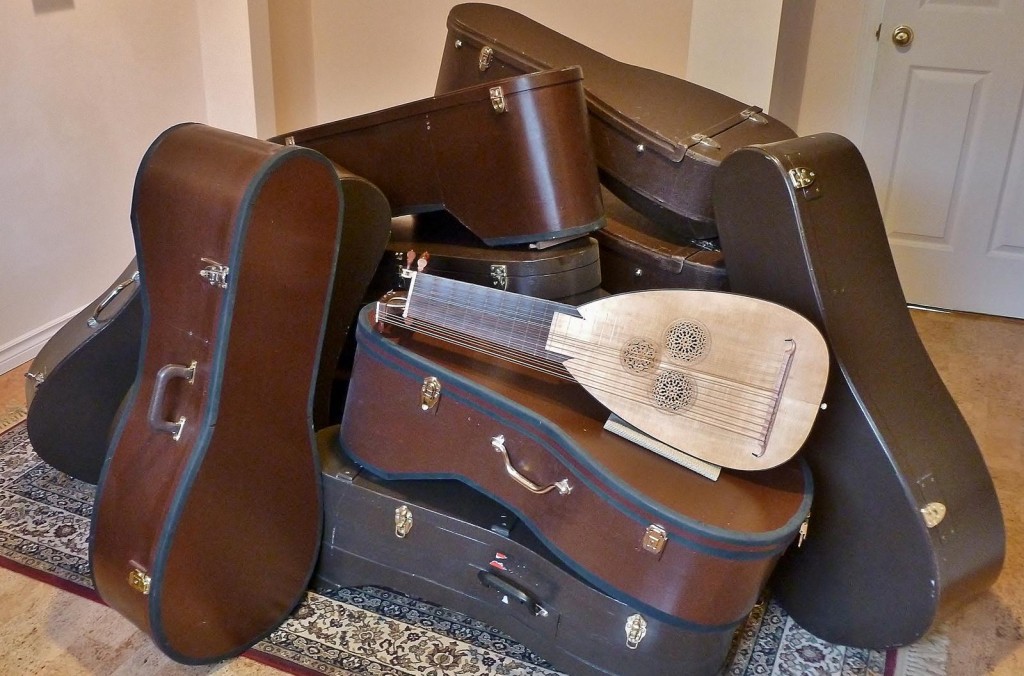
This was a guest post by Clive Titmuss
Again, a big thank you to Clive for this epic article previously published on Classical Guitar Canada. Make sure to visit his website to see more of his work and recordings (earlymusicstudio.com). All images provided by Clive Titmuss.

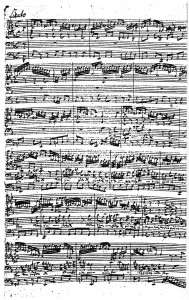
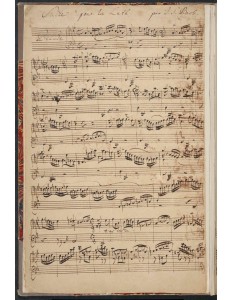
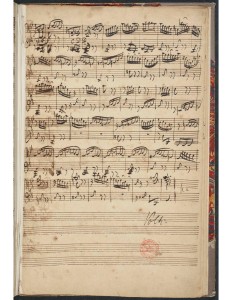
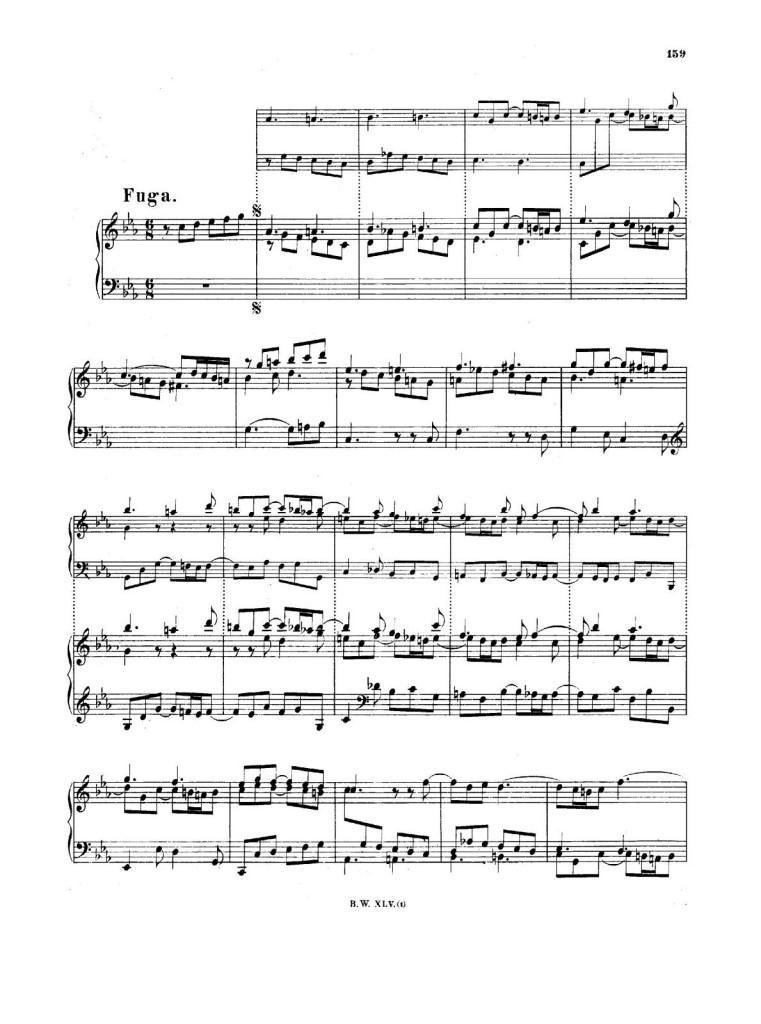
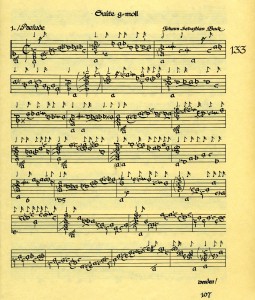
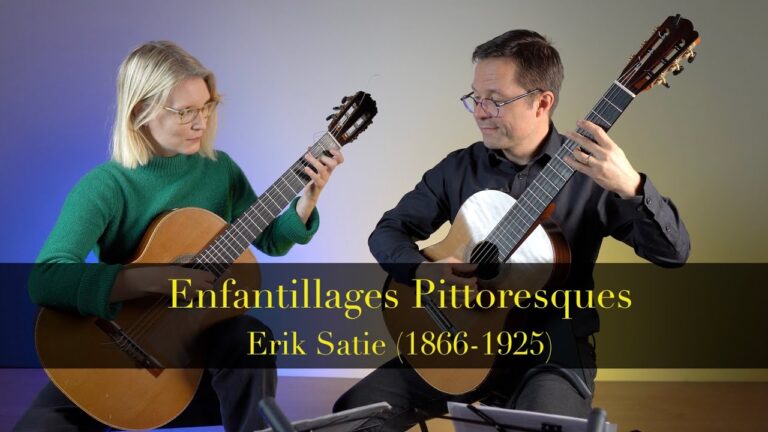
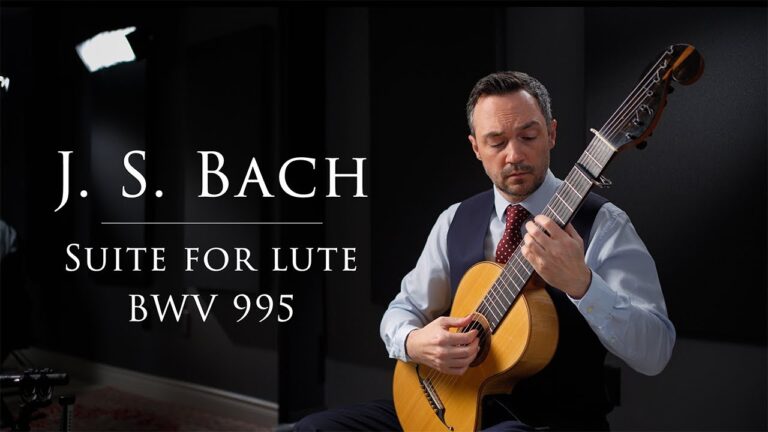
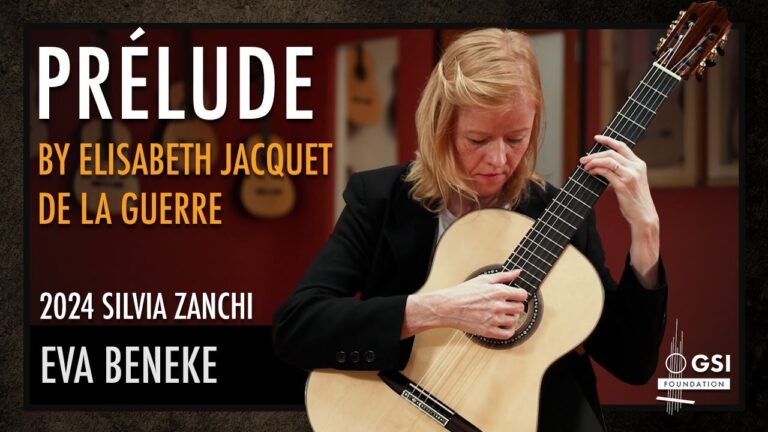
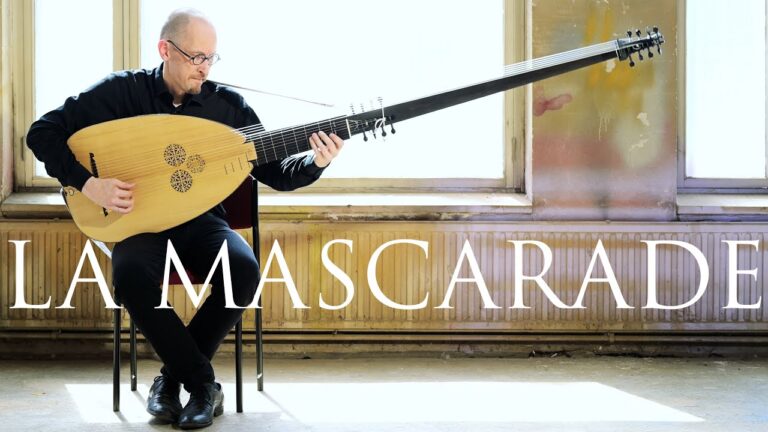
As a violin player myself, I’m aware that Bach wrote concertos with a violin solo and reworked them as keyboard pieces. Movements of Bach’s cello suites ended up as violin repertoire for students. To make cello pieces playable on a violin would require them to be transposed up a 5th. A piece in C major on a cello would be played in G on a violin. Of course going from a cello to a viola or violin is easy because these instruments are in the same family and tuned in a similar way.
A lute is a totally different instrument from a harpsichord. When both use the same type of strings, the sound of a lautenwerck “lute harpsichord” might sound very close to a lute in a recording that a listener wouldn’t be able to tell them apart. Of course a keyboard instrument with strings attached to each key a player would be able to play adjacent notes together. This would not be possible on a stringed instrument unless each of the adjacent note is on a different string.
This is the most informative and well written article on this subject I have ever encountered. By a country mile. Thank you!
Earlier in music history people didn’t didn’t consider the composer’s intentions to be as all important as we do. Instrumentalists freely adapted music written for other instruments. Much of the early lute music is adapted from vocal models. Dowland seems to have adapted his own well know lute solo, Lachrimae, from his own vocal piece, Flow my Tears. Adapting music for the lute was a necessity. Bach’s Cello Suites were obviously not composed for the lute but they can be nicely adapted for the lute and are as satisfactory as any of Weiss’ music written specifically for the lute. Authenticity isn’t important to me. I’d rather hear Vivaldi’s Four Seasons modern string instruments and no keyboard than a period performance with period instruments, harpsichord. Although I would not want to hear most of the lute repertory on a modern classical guitar, I’m only interested in period lutes to get an idea of what a lute sounded like in a particular period. I wouldn’t hesitate to adapt Milano’s music for liuto attiorbato. I like knowing about what a lute sounded like in Milano’s time but I don’t want to reproduce that sound. I modern Irish harp has a much different sound from an ancient Irish harp, which was wire strung. Period performance, though useful, is a thing of the dead past. Making early music live in present requires sensitive, historically informed interpretation.
Do you have any information on the history of BWV 1025, the suite in A for violin and obbligato harpsichord, of which the harpsichord part also exists as a Suite assumed to be by Weiss (and is sometimes played on lute with the Bach violin part)? My lutenist friend and I love this work and want to create a new edition of it. We need more background and history.
It may have occurred to critics that Pour la luth, is faulty, as it is le luth in French. Bach was familiar enough with the French tongue, I suppose. He knew what he was writing. It may NOT be a work for the lute.
Four things to be wary of in an argument on the historical authenticity of any work:
1. Politics.
We do not factually know and should not assume what Spitta (or anyone else’s) political affiliations and motivations were, still less that they were incapable of restraining their bias. Ascribing alleged bias to a writer or composer is not in any sense a historical fact. You can be sure that a scholar who invokes an agenda on someone else’s part has an agenda himself, and that agenda is to prove an argument in absence of evidence.
2. Wishy-Washy Adjectives.
‘Probable,’ ‘Unlikely,’ ‘Unpolished,’ etc. These are matters of opinion, not fact. You cannot assert opinions based on an argument if the argument itself is not proved.
3. Denying evidence.
‘Just because he has written “pour la Luth” at the top of the page, we need not conclude that he has done it with any conviction.’ With any ‘conviction?’ That is about as sloppy and misleading a statement as it is possible for a scholar to make.
4. Negative evidence.
In this case a recital of the history of all the people who ‘got it wrong’ about Bach’s putative lute pieces. That Spitta, Segovia, Bream, etc. thought Bach wrote for the Lute is not evidence that he did _not_ write for the Lute.
I don’t want to say that the argument is entirely without merit. Some of these double-staffed MS with music that is unplayable on the Lute may indeed have been intended for the Lautenwerk, or some other instrument.
But if Bach wrote ‘Pour la Lute’ on a work, then that is a work by Bach for the Lute. End of story. Either evidence matters or it doesn’t.
The Bach-Weiss story is almost certainly apocryphal. I do not believe there is any period documentation of the conversation.
There is quite a lot of letters and documents that describe the meeting of the two and the mutual respect. It’s not all readily available unless you have online access to good libraries, I found tons of source material in books at the Victoria University. The letters are great, they describe the musical games and fugue contests etc. For some basic refs you can see Wolff’s Bach Biography that mentions him a few times.
My problem with the anecdote is this: Since a harpsichord is incapable of dynamic variation through touch, an expert lutenist surely would have realized he was not listening to a lute.
Interesting, and very possibly the central thesis is correct… but: “Briefly, my argument runs like this” is followed, not by an argument, but by a brief account of what Clive Titmuss believes happened.
The “Lautenwerck” text is on the cover. But generally you should read this text with caution: There is some misinformation, incomplete information and assumptions without evidence! Someone should go through this, I won’t…
… on the cover of the Walther-Ms, that is. The picture above is from the Gerber-MS.
BTW, it was_ not_ “subtitled by the copyist” (Walther), but by Johann Tobias Krebs (H. J. Schulze on evidence of a handwriting-analysis).
Thanks so much for the info. Do you know where I can find the Walther version?
You’re welcome. You can see the ms here: http://www.bach-digital.de/receive/BachDigitalSource_source_00001766
Thanks, that site is still active and also has BWV 1000.
I’m sorry if this is a stupid question, but where’s that aufs Lauten werck subtitle you talk about? I’m having a really hard time understanding this (apparently) Italian text. All I can see is “Preludio – con la Suite en E…” after that I’m not sure what it says 🙁
amazing ! thank you
Great post…very illuminating!